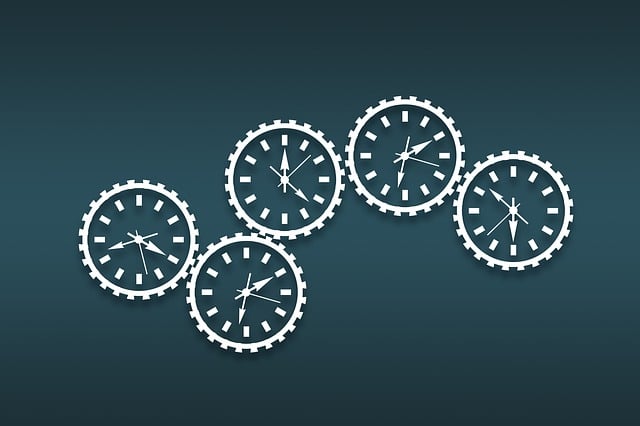Mastering 5S Training is a powerful strategy for optimal workplace organization and driving continuous improvement. This globally recognized methodology, rooted in Japanese lean management principles, comprises five key steps: Sort, Set in Order, Shine (Clean), Standardize, and Sustain. By implementing 5S, businesses can streamline workflows, reduce waste, create safer environments, boost productivity, and foster a culture of quality. Process standardization, a core principle, ensures consistent efficiency through documented procedures for every task, embedding quality into daily operations. In today's competitive market, adopting 5S training is vital for long-term success in workplace organization and continuous enhancement.
“Unleash the power of quality improvement strategies to transform your business. From the foundational understanding of these strategies to practical techniques like 5S training and Lean management principles, this article is a comprehensive guide. Discover how 5S training enhances efficiency, Lean principles streamline processes, and effective workplace organization techniques drive results. Explore the long-term benefits of 5S continuous improvement and learn why process standardization is key to consistent quality. Optimize your operations today with these proven methods.”
- Understanding Quality Improvement Strategies: A Foundation for Success
- The Role of 5S Training in Enhancing Workplace Efficiency
- Lean Management Principles: Streamlining Processes for Optimal Results
- Implementing Effective Workplace Organization Techniques
- Continuous Improvement with 5S: A Long-Term Approach
- Standardization of Processes: Ensuring Consistency and Quality
Understanding Quality Improvement Strategies: A Foundation for Success

Understanding Quality Improvement Strategies is a fundamental step for any organisation aiming to excel in its field. These strategies serve as a roadmap to enhance efficiency, reduce waste, and ultimately deliver superior products or services. One powerful approach that has gained global recognition is the 5S training methodology, rooted in Japanese lean management principles.
5S stands for Sort, Set in Order, Shine (Clean), Standardize, and Sustain. By implementing these steps, organisations can transform their workplaces into highly organised environments. This involves systematically eliminating unnecessary items, creating visual order, maintaining cleanliness, establishing standardised procedures, and fostering a culture of continuous improvement. Integrating 5S with process standardization further streamlines workflows, ensuring consistency and efficiency in every step.
The Role of 5S Training in Enhancing Workplace Efficiency

The implementation of 5S training is a powerful tool for enhancing workplace efficiency and fostering a culture of continuous improvement. Rooted in lean management principles, this methodology focuses on optimizing workspace organization and process standardization. By teaching employees the 5S methodologies—sort, set in order, shine (clean), standardize, and sustain—companies can streamline their operations, reduce waste, and create a safer, more productive environment.
5S training promotes a systematic approach to workplace organization, ensuring that every element within a workspace serves a purpose and contributes to efficiency. This involves sorting through unnecessary items, setting tools and equipment in clear, accessible order, shining (cleaning) the area to maintain hygiene and visual clarity, standardizing processes for consistency, and sustaining these practices through ongoing discipline and engagement. Embracing 5S continuous improvement drives employees to actively participate in identifying inefficiencies and implementing solutions, ultimately driving significant gains in productivity and overall workplace performance.
Lean Management Principles: Streamlining Processes for Optimal Results

Lean Management Principles are a set of strategies designed to streamline processes and eliminate waste in the workplace. At its core, lean management focuses on optimizing every step of a process to achieve maximum efficiency and minimal cost. This involves implementing principles like 5S training, which encourages sorting, setting in order, shining (cleaning), standardizing, and sustaining these practices.
By promoting workplace organization through 5S continuous improvement, businesses can enhance productivity and create an environment conducive to error reduction and process standardization. This method ensures that every employee understands their role in maintaining a high level of efficiency, fostering a culture of quality and continuous learning.
Implementing Effective Workplace Organization Techniques

Implementing effective workplace organization techniques is a cornerstone of any successful quality improvement strategy. One proven method that gains traction in this regard is the 5S training methodology, which stands for Sort, Set in Order, Shine, Standardize, and Sustain. This lean management approach aims to transform cluttered workspaces into streamlined environments by promoting process standardization and continuous improvement.
5S continuous improvement encourages employees to actively participate in organizing their work areas, eliminating waste, and creating a culture of order and efficiency. Once the 5S principles are embedded, they facilitate easier access to tools and materials, reduce time wasted searching for resources, and enhance overall productivity. As such, integrating 5S training into your quality improvement strategy can significantly contribute to improving workflow management and fostering a more disciplined, productive work environment.
Continuous Improvement with 5S: A Long-Term Approach

In today’s competitive business landscape, embracing a long-term quality improvement strategy is essential for sustained success. One powerful methodology that has proven its effectiveness in various industries is 5S—a Lean management approach focused on workplace organization and continuous improvement. This method involves five fundamental principles: Sort, Set in Order, Shine, Standardize, and Sustain. By implementing 5S training, organizations can transform their workplaces into highly efficient systems, reducing waste and streamlining processes.
The 5S continuous improvement process begins with sorting, where unnecessary items are removed to create a clean, orderly environment. Setting everything in order involves organizing tools and materials for easy access, enhancing productivity. Shining focuses on thorough cleaning and maintenance, ensuring the workplace remains safe and visually appealing. Standardization is achieved through documentation and process standardization, enabling consistent results. Finally, sustaining these practices ensures long-term benefits, fostering a culture of continuous improvement where every employee plays a vital role in maintaining optimal efficiency.
Standardization of Processes: Ensuring Consistency and Quality

In today’s competitive business landscape, achieving consistent quality is paramount. One effective strategy to accomplish this is through process standardization, a cornerstone of both lean management and 5S training methodologies. By establishing clear, documented procedures for every task, organizations can ensure that products or services are delivered in a reliable and consistent manner. This approach, known as workplace organization, goes beyond mere efficiency; it fosters an environment where quality is embedded into the very fabric of operations.
Process standardization achieves this by identifying and eliminating waste, streamlining workflows, and empowering employees to maintain high standards. The 5S continuous improvement methodology—Sort, Set in Order, Shine (Clean), Standardize, Sustain—provides a structured framework for achieving this. This system encourages regular reviews and adjustments to processes, ensuring they remain relevant and effective as the business evolves. Ultimately, standardization fosters a culture of quality where every employee understands their role in delivering exceptional outcomes.
